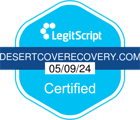Opioid Use In College Students
While it is widely thought that opioid misuse and disorders are conditions of the less educated (1), it’s a myth that the opioid crisis doesn’t affect college students. On the contrary, opioid use in college students seems to be on the rise. Statistics show that 7% to 12% of students on college campuses (2) may have opioid use disorders.
Why Is Opioid Use In College Students A Problem?
The opioid crisis is a problem in general, to be sure. But particularly for college students, who may seem especially vulnerable to the opioid epidemic, there is a concern.
It’s almost a rite of passage for college students to look at their college years as a time to ‘experiment’ and try new things. They’re typically on their own for the first time in their lives, and their levels for taking chances and risks have higher thresholds.
Since college students tend to be able to afford prescription opioids for injuries or pain, they have a tendency to be more prone to addictions beginning with prescription opioids. In fact, in 2017, the Centers for Disease Control and Prevention claimed (3) that in 16% of U.S. counties, there were enough opioid prescriptions dispensed for every person to have one. Prescription opioids are so widely available to a group of young adults who are likely making health care decisions for themselves for the first time ever, is a big part of the problem.
Believe it or not, prescription stimulant misuses are now of concern among college students. (4) Sometimes college students will also find themselves looking to opioids to tend to the unwarranted side effects of stimulants like Adderall and Ritalin.
Continued after infographic:
Risk Factors For Opioid Use In College Students
Dr. Patrice Malone is with Columbia University and New York State Psychiatric Institute. Dr. Malone says (5) that the use of opioids by college students has dramatically increased in the last two decades. This has resulted in accidental overdose increases, along with other issues. Dr. Malone believes that opioid use in college students needs to be addressed as a public health crisis.
Young adults on college campuses end up using opioids for various reasons. Many may be athletes that have been prescribed opiates for pain. They end up running out of their prescriptions and then turn to other readily available opioids like heroin.
Other times, college students may simply not understand the danger and addictive properties of the opioids they are ‘experimenting’ with. Recreational use turns to misuse disorders and addiction. Before they know it, it’s too late.
The stress of college life may also have college students turn to drugs as well. Data from 1993-2005 (6) showed the use of prescription opioid use in college students increased by a whopping 343%. Additionally, one in four universities had an annual prescription opioid use prevalence of 10% higher.
Research also suggests that students with low grade-point averages, who live in off-campus or fraternity/sorority housing situations are at a higher risk for opioid use in college. Other risk factors include those who attend competitive colleges and/or who are White/Caucasian.
Because young adults between the ages of 18 and 25 have the highest rates of substance abuse, it’s imperative that combatting opioid use in college students is a priority. In Arizona alone (7), opioid-involved deaths rose 76% since 2013 and are why opioid rehab Arizona focuses on treatment and long-term sobriety.
What Opioids Are College Students Most Likely To Misuse?
As mentioned, college students who misuse opioids often start their addictions by using prescription medications. When the misuse and abuse move into non-prescription drugs like heroin or fentanyl, the inherent danger of overdose increases.
College students with opioid use disorders may abuse the following:
- Oxycodone
- Morphine
- Oxymorphone
- Hydrocodone
- Heroin
- Codeine
- Fentanyl
When college students misuse non-prescription drugs like heroin, they may not understand how they put themselves at risk. For instance, there are increasing incidences of fentanyl being added to heroin and raising overdose-related dangers. (8)
Opioid Rehab Arizona Can Make A Difference
If you’re a college student who has found yourself depending on opioids, you’re not alone. The statistics are clear; opioid use in college students is a problem. Opioid rehab Arizona treatment centers like Desert Cove Recovery can help bring your dreams back into focus.
Desert Cove Recovery has combined its knowledge and experience with research and medical studies to bring you the best opioid rehab treatment options for long-term success. The caring and compassionate staff knows that your recovery may be difficult. They’re skilled in walking with you every step, and they customize programs to meet your specific needs for long-term sobriety.
Their holistic methods will give you the right tools to beat your addiction and get you back on the path you’re supposed to be on. You may be afraid to seek help because you don’t want a label or it’s ‘not bad enough yet.’ However, Desert Cove Recovery wants to help you wherever you are, however you need. You can break the cycle you’re in. It’s not the life you want to be living, and Desert Cove Recovery can help. You just have to make the call.
Sources:
(1) https://link.springer.com/article/10.1007/s13524-017-0565-3
(2) https://www.acha.org/documents/resources/guidelines/ACHA_Opioid_Prescribing_in_College_Health.pdf
(3) https://www.cdc.gov/drugoverdose/maps/rxrate-maps.html
(4) http://www.center4research.org/study-drug-abuse-college-students/
(5) https://www.healio.com/psychiatry/addiction/news/online/%7Bda3b60b9-cc6c-4bd6-b9ea-70b48f79f42a%7D/opioid-abuse-in-college-students-requires-increased-efforts
(6) http://www.ijhssnet.com/journals/Vol_9_No_6_June_2019/1.pdf
(7) https://www.drugabuse.gov/drugs-abuse/opioids/opioid-summaries-by-state/arizona-opioid-summary
(8) https://www.sciencedaily.com/releases/2019/03/190305124652.htm




